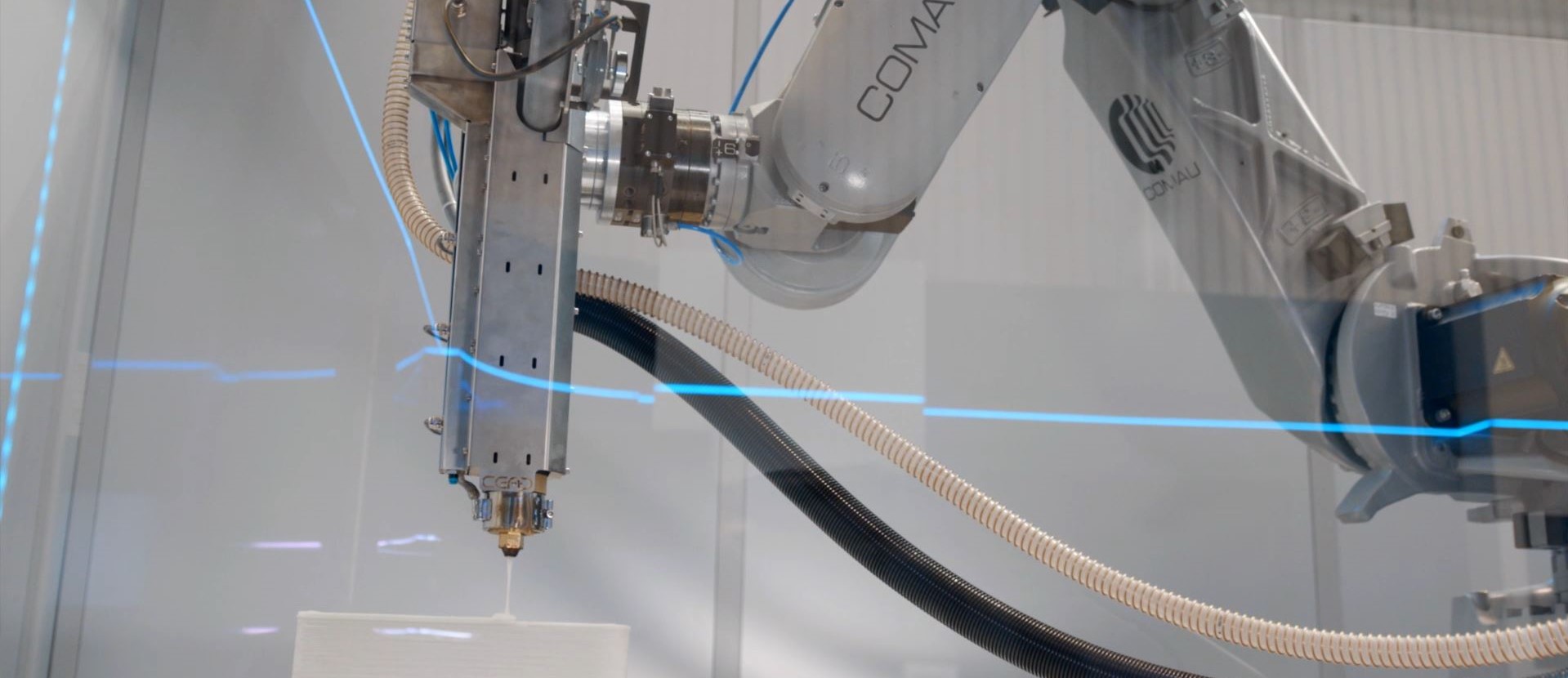Hybrid additive manufacturing with robotics

Looking at the coverage of additive manufacturing (AM), it would be easy to assume the technology is being used to directly print products in the manufacturing process. And while this is generally true for the hobbyist market, it is far from the whole story for industrial scale manufacturing. Many manufacturers are using AM to optimize the production floor itself to augment the technologies already present in the form of mold making, machining jigs and custom tooling solutions. One example of this disparity between perception and reality comes from a Siemens customer.
When building a competitive racecar there are many variables to consider, one of the most important is speed, but not just the speed of the car. For Formula One and other major racing leagues, the speed of production is a big hurdle for teams. They need to innovate quickly to gain an edge on the competition and for Seat, that meant adopting AM for their carbon fiber body molds. Traditional mold production can take several weeks for the complete process – design to use. AM changes that to just a couple days.
Aside from the manufacturing technology, the process is almost identical – designing the mold in a CAD environment, manufacturing in a CAM environment and simulating the process to attain the machine code, with a final surface milling process with CNC. The only difference is the use of a hybrid printing process conducted with a robotic arm and an open-air build surface that prints in a composite and cleans the part with a swappable milling head.

This is a near-perfect application of the hybrid composite printing technology, though robotic arms are not as precise as the closer laser power bed fusion machines, they are precise enough when combined with traditional milling operations. Since the mill is not removing much mass with each cut, the accuracy is improved over metal manufacturing.
As AM moves further into the industrial manufacturing space, the printable area will continue to grow, and robotic arm mounted printing will lead the charge. There are applications for aerospace to print entire fuselage sections with AM for light weight structures or creating custom thruster cones with integrated cooling and preheating channels as we continue our exploration of space.
Siemens Digital Industries Software is driving transformation to enable a digital enterprise where engineering, manufacturing and electronics design meet tomorrow.
Xcelerator, the comprehensive and integrated portfolio of software and services from Siemens Digital Industries Software, helps companies of all sizes create and leverage a comprehensive digital twin that provides organizations with new insights, opportunities and levels of automation to drive innovation.
For more information on Siemens Digital Industries Software products and services, visit siemens.com/software or follow us on LinkedIn, Twitter, Facebook and Instagram.
Siemens Digital Industries Software
– Where today meets tomorrow


